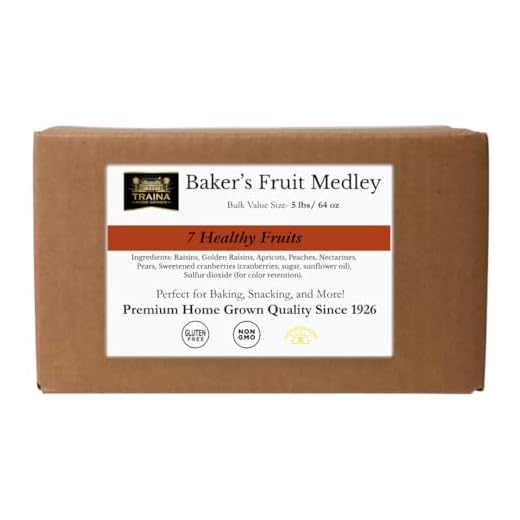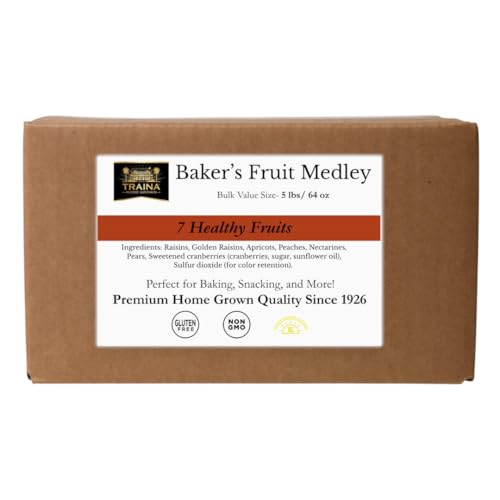






Transporting commercially sealed culinary items in checked bags is permitted by the majority of airline regulations. Commonly accepted categories include snack bars, vacuum-sealed meats, and canned goods. Always verify airline-specific policies prior to departure for potential restrictions or limitations.
Ensure all items are securely packaged to prevent spoilage or mess in the event of breakage. Avoid selecting products with liquid contents that might leak or exceed volume limits as established by security guidelines. Familiar items that tend to pass through the screening include confectionery, dried fruits, and non-perishable staples.
For international travel, regulations may differ significantly from domestic flights. Customs regulations at the destination may restrict or prohibit certain items, particularly those derived from meat or dairy. Always check the import guidelines for the country of arrival to avoid complications and potential fines.
Guidelines for Including Food in Baggage
Yes, sealed items such as snacks and pre-packaged meals are generally permitted in the hold baggage. However, several points must be considered before packing.
Types of Foods Allowed
- Canned goods
- Dried fruits
- Granola bars
- Instant noodles
- Sealed vacuum-packed products
Prohibitions and Recommendations
- Avoid items with high moisture content that may spoil.
- Check local customs regulations regarding the import of agricultural products.
- Packaging must be intact; damaged outer packages may lead to delays.
- Maintain a balanced selection to adhere to weight limits set by airlines.
Reviewing airline policies on permissible items ensures compliance with their regulations and avoids unwanted complications while traveling.
Understanding Airline Regulations for Packaged Food
Using vacuum-sealed containers or commercially packaged items is generally acceptable for transport within hold baggage. However, specific stipulations vary by airline. Review guidelines regarding maximum weight limits and prohibited products prior to your departure.
Commonly restricted items include those that might spoil or leak. Items like perishable meals or homemade snacks could pose challenges during scrutiny at security checkpoints. Keep in mind that certain airlines may enforce stricter policies based on routes or international regulations.
Consider the following table for a clearer understanding of airline policies regarding various types of items:
| Type of Item | Allowed | Notes |
|---|---|---|
| Dry snacks | Yes | Examples include packaged chips, nuts, or granola bars. |
| Canned items | Depends on airline | Check for weight restrictions and local regulations. |
| Perishable goods | No | Items that require refrigeration are typically not allowed. |
| Homemade meals | No | Most airlines prohibit these due to safety and hygiene reasons. |
| Vacuum-sealed products | Yes | Ensure they are commercially packaged and sealed. |
For international travel, be aware of customs regulations related to the importation of agricultural products. Declare any items that may be subject to scrutiny upon arrival. Failure to do so could result in fines or confiscation of items.
Types of Packaged Items Permitted in Checked Baggage
Pre-packaged snacks, such as chips or nuts, are generally accepted. These lightweight options are ideal for traveling, minimizing weight while providing sustenance.
Canned goods, including soups and vegetables, can often be included, but verify local regulations regarding specific items. Ensure they are sealed and unopened for compliance.
Dry Goods and Cereals
Dried fruits, granola bars, and cereals are excellent choices for nourishment during travel. These items are usually lightweight and compact, making them easy to pack.
Sweets and Confectionery
Chocolates, candies, and baked goods also find a place in checked items. Check for melting issues, especially in warmer climates, to avoid unwanted messes.
Traveling with kids? Consider packing snacks like fruit pouches or baby food jars. Solutions that adhere to travel regulations can provide comfort and nutrition.
For further assistance with organizing travel essentials, check out the best umbrella stroller for tall people or explore options for lightweight travel gear, such as the best lightweight backpack for camino de santiago.
Restrictions on Liquid and Gel Food Products
Liquid and gel substances are often limited in an airline’s baggage policy. These items typically include sauces, soups, and certain dessert items that maintain a gelatinous consistency. Most airlines enforce a maximum volume of 3.4 ounces (100 milliliters) per container. Packaging must be compliant, with all containers fitting inside a single quart-sized bag for carry-on travel; however, these limitations do not apply to checked items.
Important Guidelines
While there are fewer restrictions for checked bags, it’s advisable to check specific airline rules regarding liquids and gels. This includes verifying allowable volumes and packaging methods. On long-haul flights, strong odors from liquids or gels may draw scrutiny and should be sealed tightly to prevent leaks. Always keep an eye on customs regulations, as certain substances related to cooking or certain gel products may be prohibited in various countries.
Recommendations for Travel
To avoid complications, consider vacuum sealing liquid products or opting for powder forms where possible. For gel-based items, ensure they comply with airline guidelines and always declare any items that could raise questions. Packaging in plastic or glass can impact safety and compliance, so choose materials accordingly. Prioritize products that have a long shelf life and are less susceptible to damage during transit.
How to Properly Pack Food to Avoid Damage
Utilize sturdy containers made of glass or hard plastic for fragile items to prevent breakage during transit.
Wrap individual portions in bubble wrap or packing paper, focusing on corners and edges where impact is likely. Secure with tape to keep everything tightly sealed.
Utilize vacuum-sealed bags for perishables, reducing air exposure and preventing spoilage. This method also minimizes bulk while protecting contents.
Separate items by using dividers or packing foam to avoid shifting and potential crushing. Ensure heavier objects are placed at the bottom of the bag.
Clearly label packages with contents and expiry dates to facilitate inspection and avoid confusion at checkpoints.
Incorporate absorbent materials, such as paper towels, between containers to soak up any spills that may occur during transit.
Protect liquids with sealed zip-lock bags or dedicated containers designed to prevent leaks, ensuring they are adequately cushioned within the main compartment.
Consider temperature control options, such as insulated bags or cooling packs, especially for items prone to spoilage, maintaining their quality during travel.
Regularly check local regulations to confirm compliance with transport requirements, ensuring a smooth journey for all items included.
Potential Customs Regulations for International Travel
Research specific guidelines of the destination country regarding restrictions on imported items prior to travel. Each nation has unique regulations that may affect what can enter its borders.
Common Prohibitions
- Meat and dairy products: Many countries ban the import of these items to prevent disease.
- Fruits and vegetables: Specific restrictions exist to protect local agriculture from pests and diseases.
- Snacks containing certain ingredients: Be aware of regulations concerning additives or specific components that may be banned.
Declaration Requirements
Complete customs declarations accurately to avoid penalties. Some nations require detailed information about items being brought in. Failing to declare products may lead to confiscation or fines.
Consult customs authorities for the latest requirements, as changes can occur frequently. It is advisable to access reliable resources or official government websites for up-to-date information before heading to the airport.
Maintain clear packaging and labels on all items. This simplifies the customs process and can assist in clarifying any uncertainties that customs officials may have regarding the contents.
Tips for Traveling with Food in Your Luggage
Before packing perishables, check the temperature regulations for longevity during transport. For instance, packing cooling gel packs can help maintain optimal conditions for items sensitive to heat.
Use vacuum-sealed bags for snacks and dry goods. This method not only saves space but also prevents spoilage due to air exposure. Opt for lightweight, unbreakable containers to minimize weight and the risk of shattering.
Label all food items clearly to avoid confusion during security screening. Using clear containers can simplify the process for TSA agents and customs officials.
Consider any potential spills; seal containers tightly to avoid leaks. Wrapping vulnerable items in clothing can provide extra cushioning during transit.
Research customs restrictions at your destination. Some countries impose strict regulations on certain agricultural products, affecting what can be brought into the country. Verify local guidelines to prevent confiscation.
Utilize packing space cleverly. Integrate snacks within your clothing layers for better protection, and take advantage of every nook and cranny in the bag.
For extra tips on practical DIY projects, check out this guide on how to bury invisible dog fence wire.







